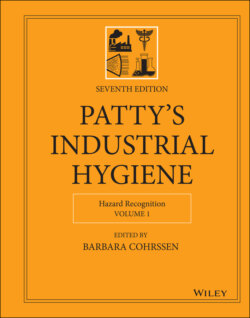Читать книгу Patty's Industrial Hygiene, Hazard Recognition - Группа авторов - Страница 22
2.7 1980s: Growth and Major Changes in the Nature of Industrial Hygiene Profession
ОглавлениеIncreasingly, industrial hygienists became involved with allied fields in the management of aspects of environmental/community affairs in the 1980s. An example of the merging of industrial hygiene and environmental/community affairs in the 1980s, was the global chemical industry addressing opportunities for protection of the health and well‐being of both their employees and the communities in which their plants operated. An initiative identified as Responsible Care. This initiative required companies to pledge to manage their business according to listed principles (50). These principles pledged certain practices in controlling sources of exposures to employees and generally endorsed good industrial hygiene practices to augment both community and worker health. There are over 40 country chemical industry associations with Responsible Care programs in place.
In addition, the 1980s saw a large increase in the number of industrial hygiene samples collected, and it has been noted (by Cherrie below) that the majority of industrial hygiene samples collected historically likely occurred in the 1980s. For example, if you search the National Institute for Occupational Safety and Health (NIOSH) site for Health Hazard Evaluations (HHE) in the period of 1980 to 1989, you will see that 1429 HHE were conducted versus 780 in the next ten year (51). This information was critical to developing and improving the science of dose–response for stressors found in the workplace and the environment. Indeed, once this exposure assessment information was systematically collected, many important risk assessment efforts were undertaken by government agencies in the 1980s, such as for benzene and asbestos (52). The science of exposure assessment continued to improve throughout and after the 1980s. Increasingly industrial hygienists assisted in the development of exposure estimates to improve the power of epidemiology surveys. As noted by Cherrie, since that time “there have been considerable developments in the science of human exposure assessment and in particular in the development of theoretical models to describe exposure to hazardous substances” that have caused or at least contributed to the decline in the use of personal sampling techniques beginning in the 1990s (41). Current developments in sensor technologies may well reverse this previous trend with a myriad of increasing personal measurements in the future.
While continuing to still be a relatively small profession, the 1980s again saw the doubling of the number of CIHs from 1750 at the end of the 1970s to 4581 by the end of the 1980s.
